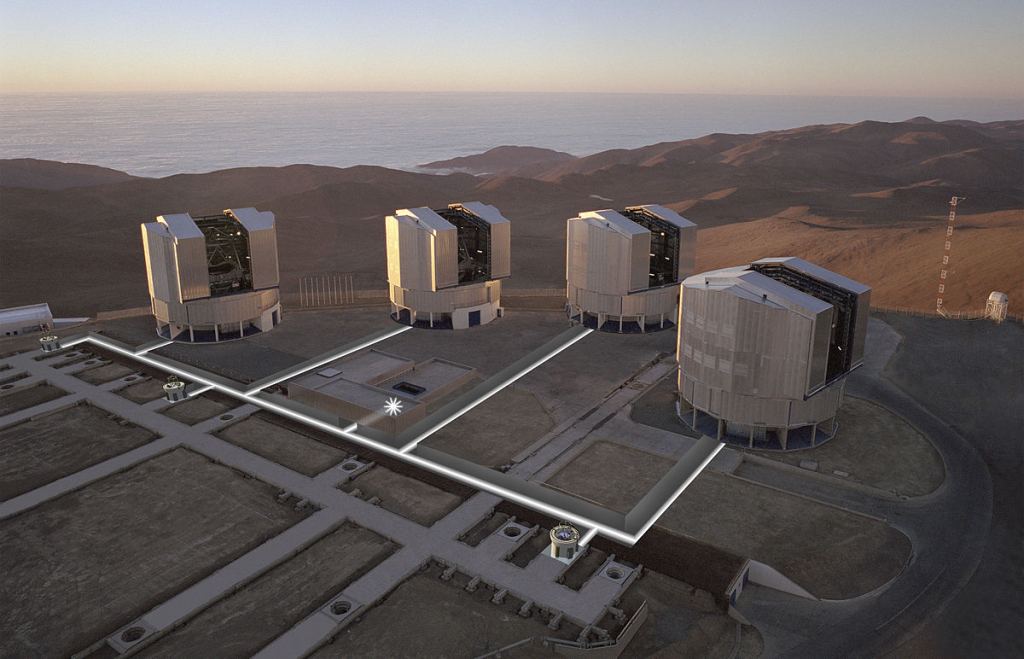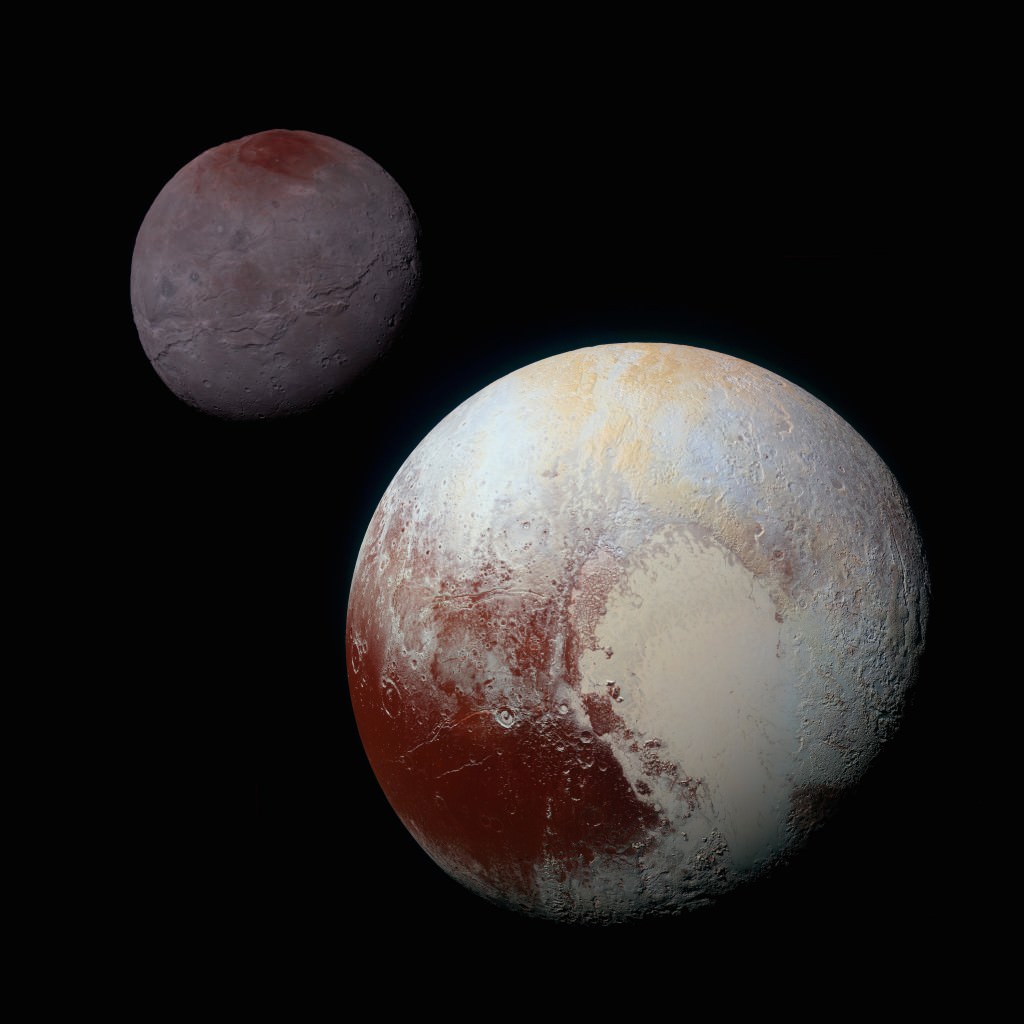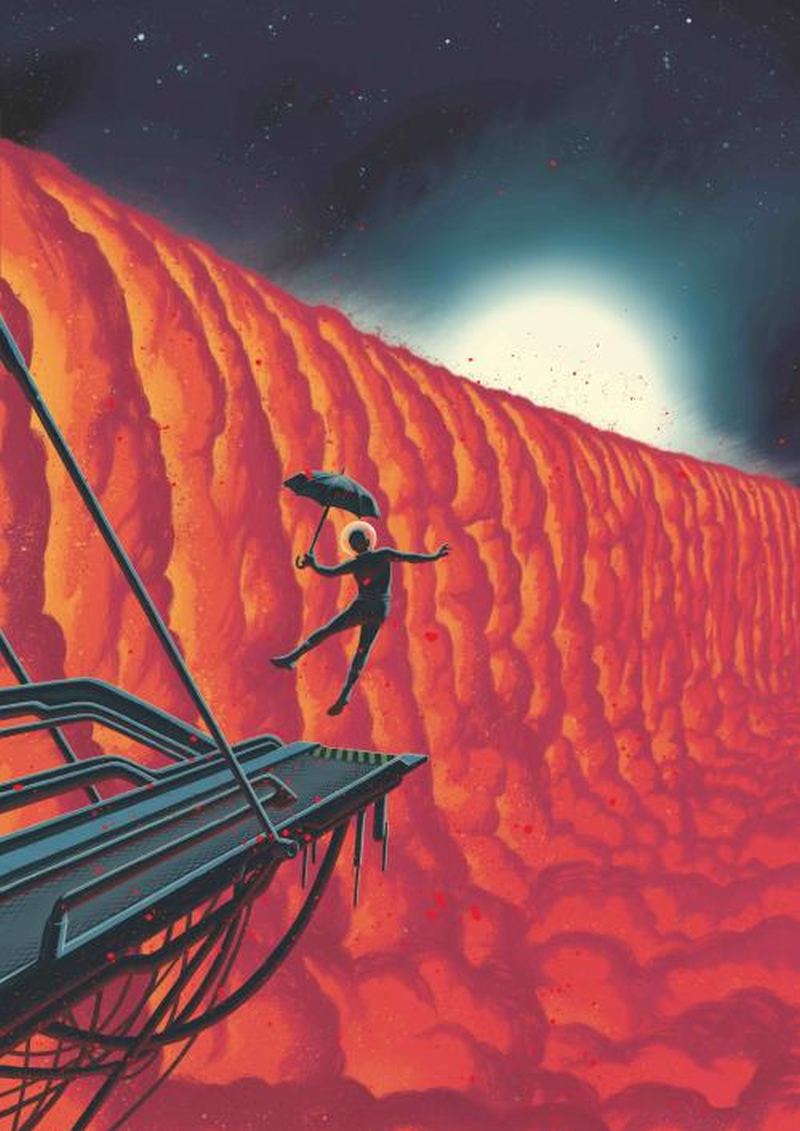Imagine a planet where it rained iron. Sounds impossible. But on one distant exoplanet, which is tidally locked to its star, the nightside has to contend with a ferrous downpour.
The planet is called WASP-76b and it’s about 390 light years away from us in the constellation Pisces. It was discovered in 2013, and it’s the only known planet orbiting the star WASP-76. It’s a huge planet, and the dayside temperature can reach 2,400 Celsius (4350 F) which is hot enough to not only melt iron, but to split molecules into atoms.
“One could say this planet gets rainy in the evening, except that it rains iron.”
Professor David Ehrenreich, Lead Author.
A new study published in Nature outlines the iron-rain nature of the planet. The study is titled “Nightside condensation of iron in an ultrahot giant exoplanet.” Lead author is David Ehrenreich, a professor in the Department of Astronomy in the Faculty of Science at University of Geneva, Switzerland.
The planet was discovered by WASP, the Wide Angle Search for Planets. In a previous study it was identified as an irradiated and bloated Hot Jupiter. Hot Jupiters are a classification of exoplanets that are similar to Jupiter, but orbit very close to their host stars, and have very high surface temperatures.

Hot Jupiters are an exotic planet type, compared to the planets in our Solar System. But Wasp-76b is exotic, even for a Hot Jupiter. “One could say this planet gets rainy in the evening, except that it rains iron”, says Ehrenreich, the first author of the study.
This discovery was made with the ESPRESSO instrument on the European Southern Observatory’s (ESO) Very Large Telescope (VLT). ESPRESSO stands for Echelle SPectrograph for Rocky Exoplanets and Stable Spectroscopic Observations. It’s a high-resolution spectrograph that can work with light from a single one of the four 8.2 meter telescopes that make up the VLT. Or it can work with more light, up to all four telescopes at the facility.

The unusual planet is tidally-locked to its star. Just like our Moon, it’s day length is the same as its year: It takes as long to orbit its star as it does to complete one rotation. And since it’s so close to its star, this leads to some strange and exotic conditions, which we can hardly call weather.
The star-facing side receives and enormous amount of insolation. But in a Jekyll and Hyde twist, the other side is in darkness. What does that mean?
“In other words, it rains iron on the night side of this extreme exoplanet.”
Christophe Lovis, University of Geneva, Lead Data Analyst at ESPRESSO
It means the Sun-side is baking in heat high enough to melt iron, not into liquid, but into vapour. It also means that vapourized iron is blown from the scorching hot dayside to the much cooler nightside, where it falls as rain. And ESPRESSO detected this vapour where the evening side and the Sun side meet.
“Surprisingly, however, we don’t see iron vapour on the other side of the planet, in the morning,” says Christophe Lovis, a researcher at UNIGE and lead-data analyst of ESPRESSO. “The conclusion is that the iron has condensed during the night. In other words, it rains iron on the night side of this extreme exoplanet.”

The discovery if WASP-76b’s iron rain dates back to 2018, and the first observations made with ESPRESSO. The iron rain, though shocking and unusual from an Earthly perspective, is in-line with predictions.
Planets with extremely high insolation are predicted to be free from clouds, and to be dominated by atomic species. At the much cooler night-side, those species are expected to recombine into molecules. That makes abundant sense.
But it’s never been detected before.
In this case, ESPRESSO detected the neutral iron absorption signal, blue-shifted on the trailing limb. In their paper, the authors make it clear that this “can be explained by a combination of planetary rotation and wind blowing from the hot dayside.” And on the other hand, “… no signal arises from the nightside close to the morning terminator, showing that atomic iron is not absorbing starlight there.”

This leads to the only real conclusion: “Iron must thus condense during its journey across the nightside.”
WASP-76b and other Hot Jupiters show thermal phase curves that suggest nightside clouds. The authors conclude that “On WASP-76b and similarly hot planets, these clouds could be made out of iron droplets, since liquid iron is the most stable high-temperature iron-bearing condensate. Hence, it could literally rain iron on the nightside of WASP-76b.”
The ESPRESSO instrument was initially devised as a method of discovering new planets, and to characterize known ones. But it’s done so much more.
“We thought very early on that we could use the instrument not only to discover new planets, but also to characterize those that are already known. However, until 2018, we didn’t realise how powerful ESPRESSO really was in this field”, explains Francesco Pepe, professor at the Department of astronomy of the Faculty of Science at UNIGE and principal investigator of the ESPRESSO consortium.
“Thanks to this technology, we now have a completely new way of tracing the climate of the most extreme exoplanets”, concludes David Ehrenreich.

